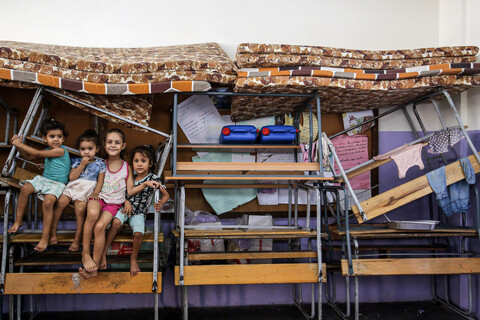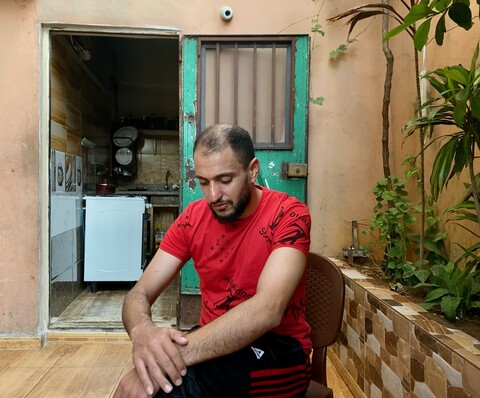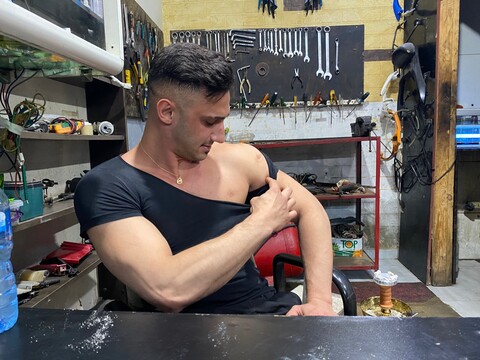The Electronic Intifada 17 May 2018
Seventy years ago, Palestinians suffered the Nakba, or catastrophe, when most fled or were forced by Zionist militias to flee Palestine to make room for the creation of the state of Israel and ensure a Jewish majority. Some 750,000 ended up as refugees registered with the United Nations. Many others fended for themselves. They were never allowed to return to their lands or homes which were confiscated by the nascent state, and many of their villages were subsequently destroyed. Here – and here, from inside Palestine – survivors tell their stories.
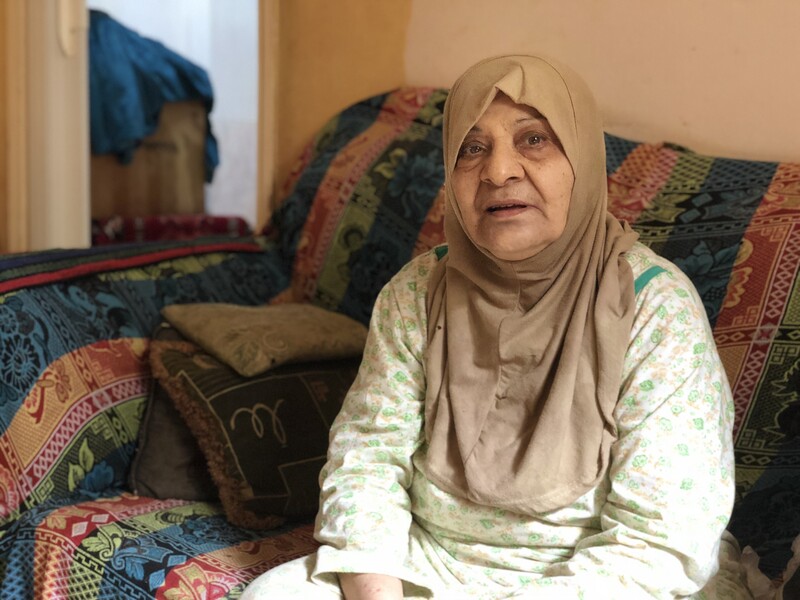
Fatima Feisal, 78, Ein al-Hilweh refugee camp, Sidon, Lebanon. Originally from Tarshiha in the Galilee.
I can close my eyes and remember every single detail about that village. The streets, the neighborhood. The fig and berry trees. Every single detail. It is like I can see it right before my eyes. My family lived off farming. We had more than 100 goats. The biggest one was my favorite. I used to ride him like a bike. I called him “my bike.”
Once I was taking food for the shepherd who worked for us. The settlers saw me and asked me why I was there. I told them I was delivering food for the shepherd who was with our goats close to one of the settlements. I showed them the food, but they did not believe me. They thought I was passing information and that he was a freedom fighter. They captured him and tortured him. They burned his entire body.
I was 9 when the planes bombed Tarshiha. It was the worst night of my life. People were hiding in the mayor’s house. He was from the Huwari family and had a big house. I saw how the house got bombed. I also saw how the villagers were trying to save people from under the rubble.
I was separated from my family and my brother, Ali, and had no choice but to go look for him. He was younger than me. It was like doomsday. People running and screaming. I went to the caves on the border of the village. They were packed with people hiding from the strikes. I started calling his name. He finally answered. I held his hand and started walking away from the village. We walked for two hours to another village called Sabalan where we were reunited with our family. Then we continued on to Lebanon.
I have one last wish. I am 78. It will be my last wish. There was a berry tree right in front of our house in Tarshiha. I want to go back there and eat one berry. One last berry.
Reportage and photo by Amena ElAshkar
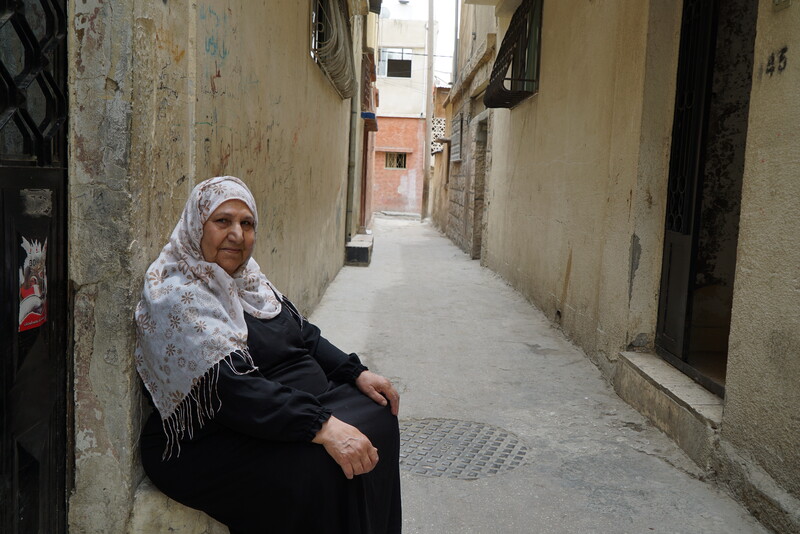
Naaseh Khaled Hamoudeh, 70, Wihdat Camp, Amman. Originally from Deir Tarif near Ramla.
I was born in a village called Deir Tarif. My father owned camels he used to carry goods from place to place.
I was one or two months old when the Nakba happened. The villages in our area were getting attacked, one after the other, and the whole area was besieged and left with scarce food supplies. My parents went to get food from the nearest town and left me in the care of my brother and sister. My brother, at 15, was the oldest at the time. But our parents couldn’t come back because the road to our village was blocked and the Zionists were getting closer to our village.
The village mayor then gathered all the children in a big truck and drove us to a village called Shuqba. We stayed there for a while. Adults were taking care of children without parents. I was breastfed by different women with infants. We lost many on the way. My uncle and his newly engaged daughter were shot for no reason. There were corpses lying in the streets, and it was difficult to give them all a proper burial. Only the women and girls were being buried. My cousin’s corpse had to be retrieved at great risk at night.
Our parents found us after searching for days. We moved to different villages seeking food and shelter. We went to Qibya then to Kafr Thulth, then we moved to Deir Ammar.
My family went to Jordan afterwards and stayed near Wadi al-Seer in tents. Then we moved to the Wihdat camp around 1955. There were seven of us and we had to all sleep in one room. We couldn’t afford a metal roof so we covered our dwelling with a big cloth.
All my memories are from the camp. I consider it home but I will never give up my right of return. People at the camp live a hard life and suffer a lot but that also creates deep solidarity in our society. I try to be as active as I can in political and cultural activities in the camp. I joined the Arab nationalist movement in 1962 and later the Popular Front for the Liberation of Palestine. I used to host secret political meetings at my house.
I miss those days, people were more dedicated and loyal to their cause.
My son Ali went to study in Beirut. When the Israeli invasion happened, I called him and I told him he had no choice but to fight and defend Beirut. I was always worried about him but I was also equally worried about all the fighters who were defending Beirut.
Return will happen one day. The poor and the rich, the homeless and people in mansions and all different people will be able to go back. The right of return is sacred. And if I don’t live to return, you will return, my son. And if you don’t return, your children will eventually return.
Reportage by Ali Ibrahim, photo by Nadine Osama

Widad Kawar, 87, Amman. Originally from Bethlehem.
I was born in Bethlehem, and I went to the Friends boarding school in Ramallah. I graduated a few weeks before the Nakba and was rushed home because of the escalating political situation. Some Jordanian students were escorted back to Jordan by the Jordanian army. I had to go to Jerusalem to get a taxi to Bethlehem.
After the Nakba, I went to study at the women’s college at the American University of Beirut. And when I came back, Bethlehem was a completely different place.
Bethlehem was unique in being both village and city, a place for tradition and modernity. It was a center for the many villages around it and the younger sister of Jerusalem. Women from the villages would come to our houses in Bethlehem to sell different products. I always enjoyed their wit and the liveliness with which they told stories of rural lives. The villagers also held weekly markets in the main towns on Saturdays. That’s where I originally started collecting small pieces of embroidery and later full dresses.
After the Nakba, Bethlehem was cut off from Jerusalem and many surrounding villages. Many villagers became refugees in Bethlehem, living in tiny spaces or in refugee camps. These people were accustomed to working lands they had cared for for centuries. They had different customs and traditions and different styles of embroidery that defined their identity. I started collecting these dresses along with the stories of the women behind them.
For me, Palestinian embroidery reflects identity, society and land. It reflects identity because every village in Palestine had their own style through which they proudly related to their heritage. It is a reflection of society, a kaleidoscope of diverse histories, threads, cultures and colors weaved together. The Palestinian dress tells of good old times when women were an active part of society, and in their own time would gather on breezy summer afternoons and work together on their dresses while trading expertise.
It also reflects the land because the symbols and colors were taken from the land. The cypress tree is a famous symbol that we often see in the designs of dresses. Most people used to plant cypresses around their land to mark borders and protect their crops from strong winds. The colors were usually derived from local plants, like sumac for red.
Reportage by Ali Ibrahim, photo by Nadine Osama
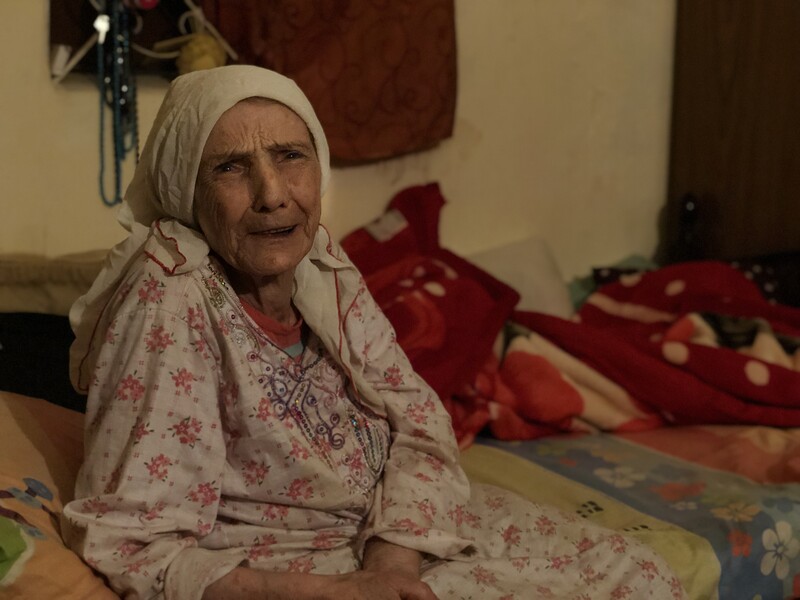
Khazna al-Sahli, 88, Burj al-Barajneh refugee camp, Beirut. Originally from Balad al-Sheikh near Haifa.
My village was so beautiful. I can still see the fields just like I can see you. We used to grow all kinds, eggplants, tomatoes, wheat. My father was a farmer, but my mother was from the city. She was from Haifa. I loved going with my father to Haifa to sell our produce. Once I could not find my slippers to go with him, so I went barefoot.
It all started when the mayor of the village came knocking at our house. He told us that the British gave everything to the Jews and now they’re coming to force us out. “You have to hide!” There had been no problems with the Jews of Neshar [a Zionist settlement] until then. The houses in the settlement looked nothing like ours. They lived in small, colored houses. The Jews sold their produce in our village and we sold ours in Neshar.
On the day we fled, the mayor came with three cars. He took us to Nazareth and from there we went to Syria, to Tel-Mnin. We stayed one whole month in a barn. Then we went to what later became known as the Yarmouk refugee camp in Damascus.
Reportage and photo by Amena ElAshkar
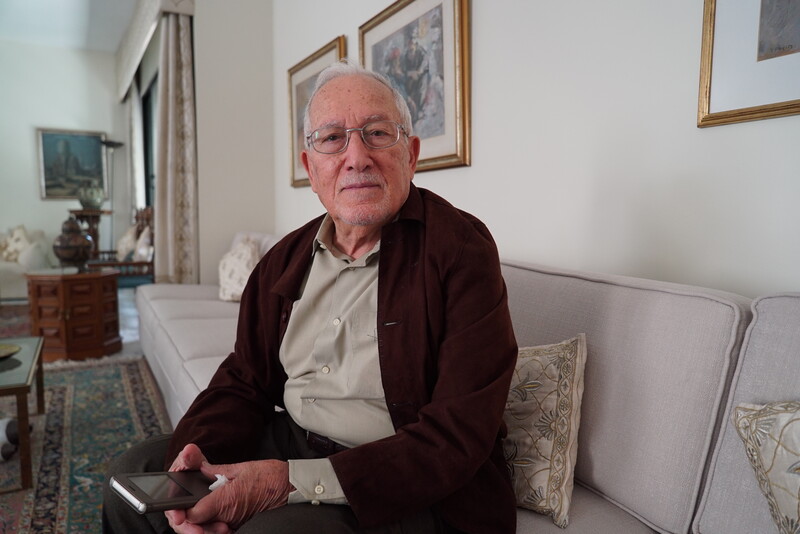
Wael Abdo ِِal-Sajdi, 88, Amman. Originally from Jerusalem.
My father was a civil engineer with the British Mandate authorities and would work at different locations across Palestine. The family is originally from Nablus but I was born in Jerusalem in 1930 where my father was positioned at the time. I consider Jerusalem my home. I studied and spent my childhood there. I still remember every street and I can lead you through any path or shortcut.
The Nakba started before 1948. I remember once my father was positioned in Nablus for a year. There was an attack from the freedom fighters on British troops and they had announced a curfew in the town. I was bored, so I went to the balcony. All the streets were empty except for an armored army vehicle with a big gun on top patrolling the area.
An old man, known to the entire city to be deaf, must have not heard the curfew announcement. The soldier pointed the gun at him and warned him but he kept on walking. I still remember him falling to the ground. He was clearly not a threat but the soldier didn’t hesitate to shoot him. Nobody could remove his body until the next day.
I really wanted to visit Jerusalem in 2000 when I turned 70. It was nearly impossible to get a permit to enter the city at that time but I was determined to get in, one way or the other. I put on a quintessential Western tourist outfit – shorts, a hat, a light shirt – and slung my video camera around my neck. I made a point to pay full price for a shared taxi for the driver to take me through the sideroads to Jerusalem. I told him I could get us inside the city without a problem.
Unfortunately, there was a checkpoint after all. The soldiers talked to the driver, and when they asked for my ID I only responded in Italian and sign language. They believed it and let us go. I would only talk in Italian to soldiers inside the city. I went to my old house, which is now a Turkish cultural center. I asked them if I could roam around, and they agreed when I told them I used to live there with my family. I also visited my old school and restaurants I used to eat in with my family. I walked around still-familiar streets and markets.
I cried at each place.
Reportage by Ali Ibrahim, photo by Nadine Osama
–
Amena ElAshkar is a journalist and photographer based in Burj al-Barajneh refugee camp in Beirut.
Ali Ibrahim is a journalist based in Amman.
Nadine Osama is a researcher and photographer in Amman.
